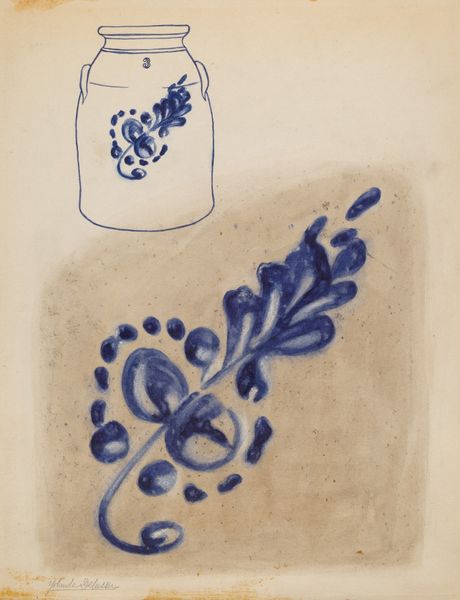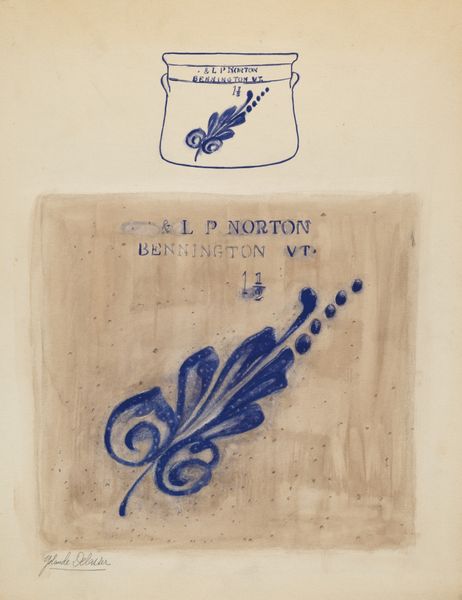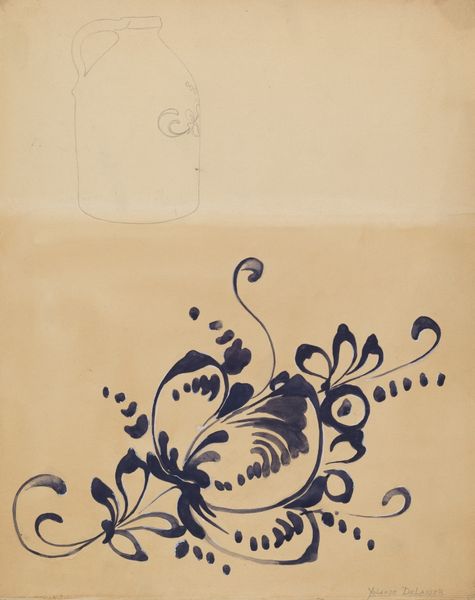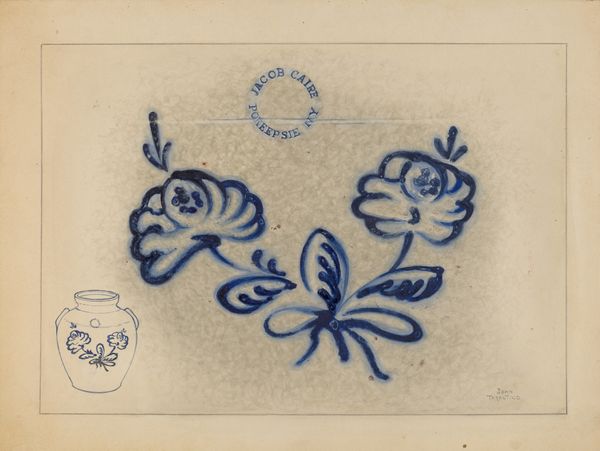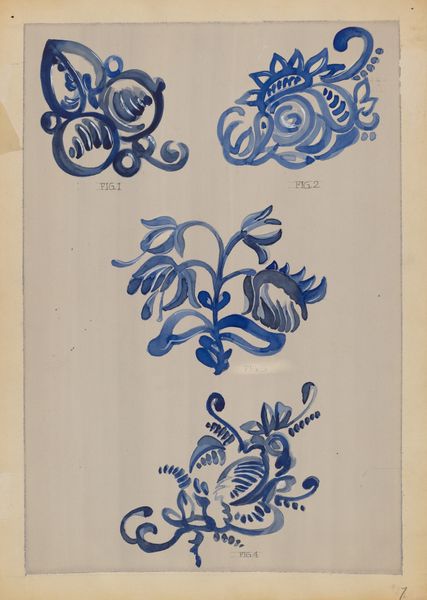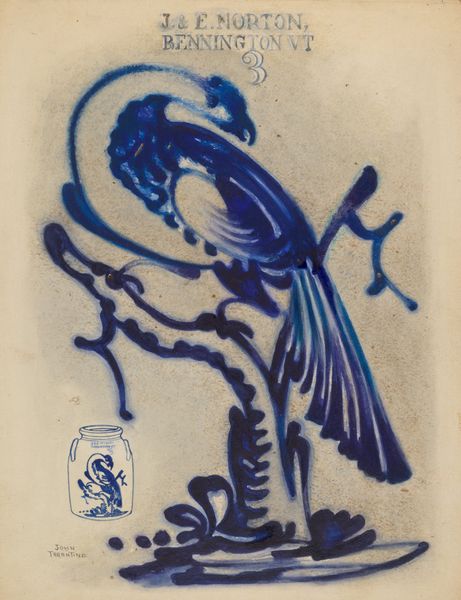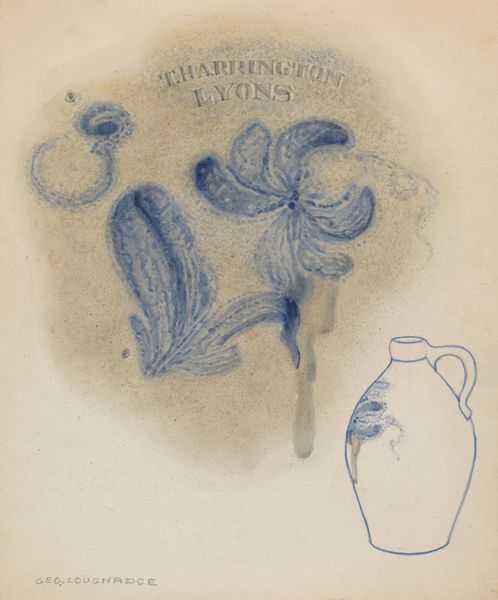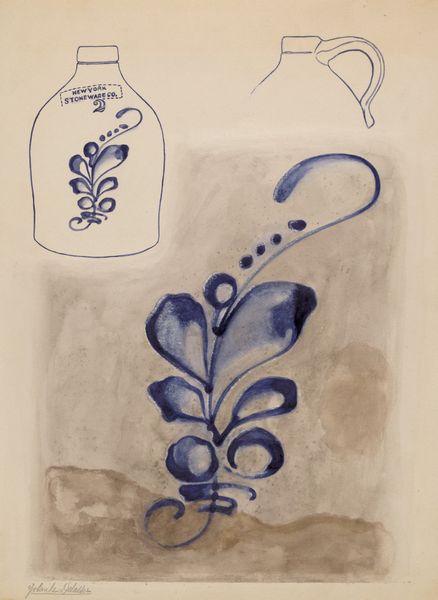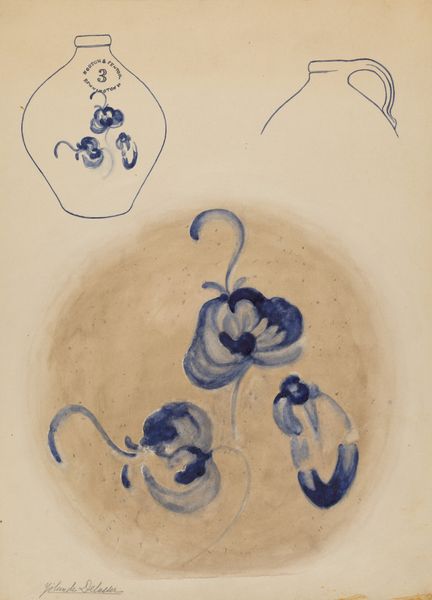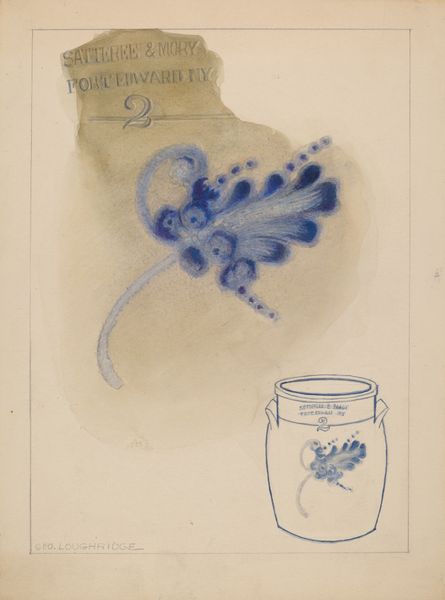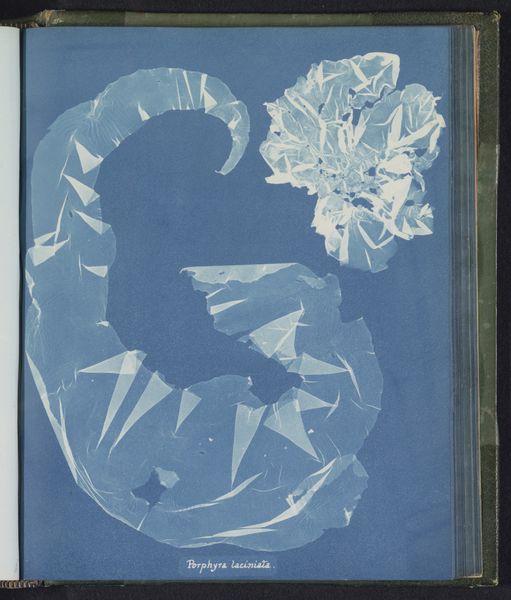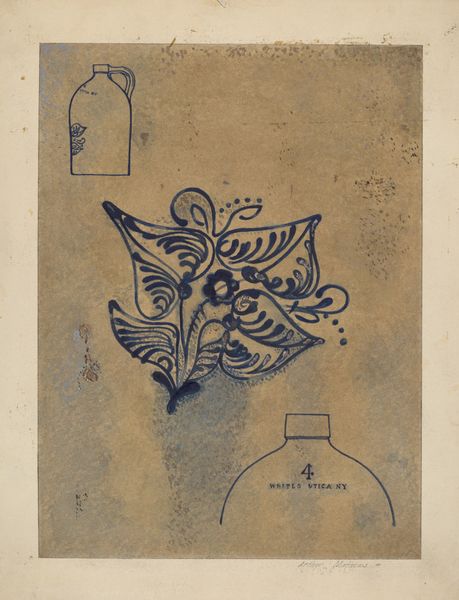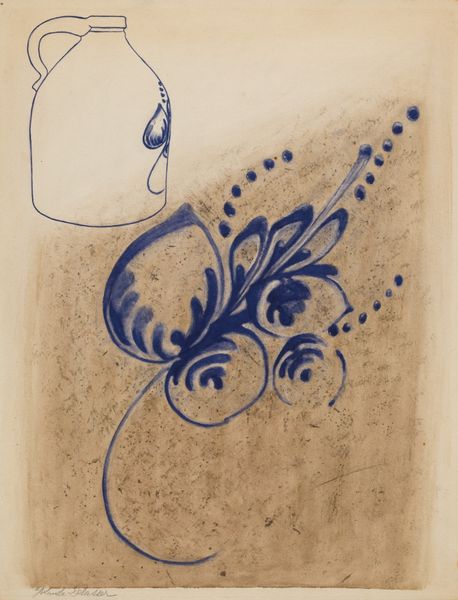
drawing, painting, watercolor
#
drawing
#
painting
#
watercolor
#
coloured pencil
#
watercolor
Dimensions: overall: 29.1 x 22.5 cm (11 7/16 x 8 7/8 in.) Original IAD Object: 16 1/2" High
Copyright: National Gallery of Art: CC0 1.0
Curator: Looking at this, I see something rather quaint, almost folksy in its rendering. Editor: Indeed. This watercolor and colored pencil piece, titled "Jug", was completed circa 1937 by John Dana. The floral arrangement intertwined with the sketched jug has a decorative sensibility, doesn’t it? The application feels somewhat hasty, creating a ghostly afterimage, perhaps hinting at something lost or half-remembered. Curator: I agree, and the dominance of that blue wash gives it a cool tonality; I detect a calculated restraint within its composition, yet observe how the swirling floral motifs contrast against those assertive horizontal lines. This opposition sparks a fascinating semiotic conflict—order versus growth. Editor: Interesting. For me, knowing the era—the late 1930s—I can’t help but read a layer of social context into this work. This period, steeped in economic depression, makes you consider this could reflect the kind of decorative art accessible or perhaps even aspired to by working-class communities at the time. Maybe even a DIY culture? Curator: Certainly. One could apply Levi-Strauss’s binary opposition model to this. However, notice also the considered absence of color, which, tonally speaking, could easily imbue it with connotations of decline or dispossession. That lack becomes the focal point. Editor: The starkness, the utilitarian jug placed amidst these flowering symbols, certainly speaks to a possible dichotomy, the harsh reality versus delicate aspiration. Curator: Precisely. The reduction to these basal compositional elements—form, tone, line—allows an intensified understanding of pictorial space. The 'idea' of 'Jug' becomes elevated by virtue of a reduced representational index. Editor: And when considering such representation we also need to recall the institutional frameworks around Dana's work—where was it shown? How was it viewed? The reception shapes meaning as surely as the creation itself. Curator: Ah, quite. The hermeneutic circle never ceases, does it? Ultimately, for me, this artwork exemplifies how even within apparent simplicity, we discover intricacies that continually prompt renewed interpretation and visual reckoning. Editor: Yes, by examining how objects acquire meaning we can better reveal art’s power as a sociocultural commentary, reflecting and shaping history through form and aesthetics.
Comments
No comments
Be the first to comment and join the conversation on the ultimate creative platform.
